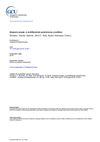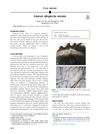A Nonrandomized Study of Trichoscopy Patterns Using Nonpolarized (Contact) and Polarized (Noncontact) Dermatoscopy in Hair and Shaft Disorders
January 2014
in “
International Journal of Trichology
”
trichoscopy polarized dermoscopy nonpolarized dermoscopy vascular patterns scaling reticular pigmentation black dots tapered hair honeycomb pigmentation alopecia areata interfollicular scaling tinea capitis yellow dots androgenetic alopecia hair and scalp disorders hair loss hair thinning scalp conditions

TLDR Polarized dermoscopy is slightly better than nonpolarized for diagnosing hair disorders, with each method having its own strengths.
The study involved 112 patients with various hair and scalp disorders and aimed to compare the effectiveness of polarized (noncontact) and nonpolarized (contact) dermoscopy in diagnosing these conditions. It was found that polarized mode was superior for visualizing vascular patterns, scaling, and reticular pigmentation, while nonpolarized mode was better for identifying black dots and tapered hair. The study concluded that each dermoscopic mode has its advantages for documenting specific trichoscopy features, with polarized dermoscopy slightly outperforming nonpolarized in diagnosing hair disorders. Specific patterns such as honeycomb pigmentation in alopecia areata and interfollicular scaling in tinea capitis had high specificity and positive predictive value with polarized dermoscopy. Yellow dots were significant in androgenetic alopecia, and tapered hair was closely associated with alopecia areata. The findings suggest that trichoscopy, particularly with polarized dermoscopy, can enhance diagnostic accuracy and contribute to the understanding of hair disorder pathogenesis.


